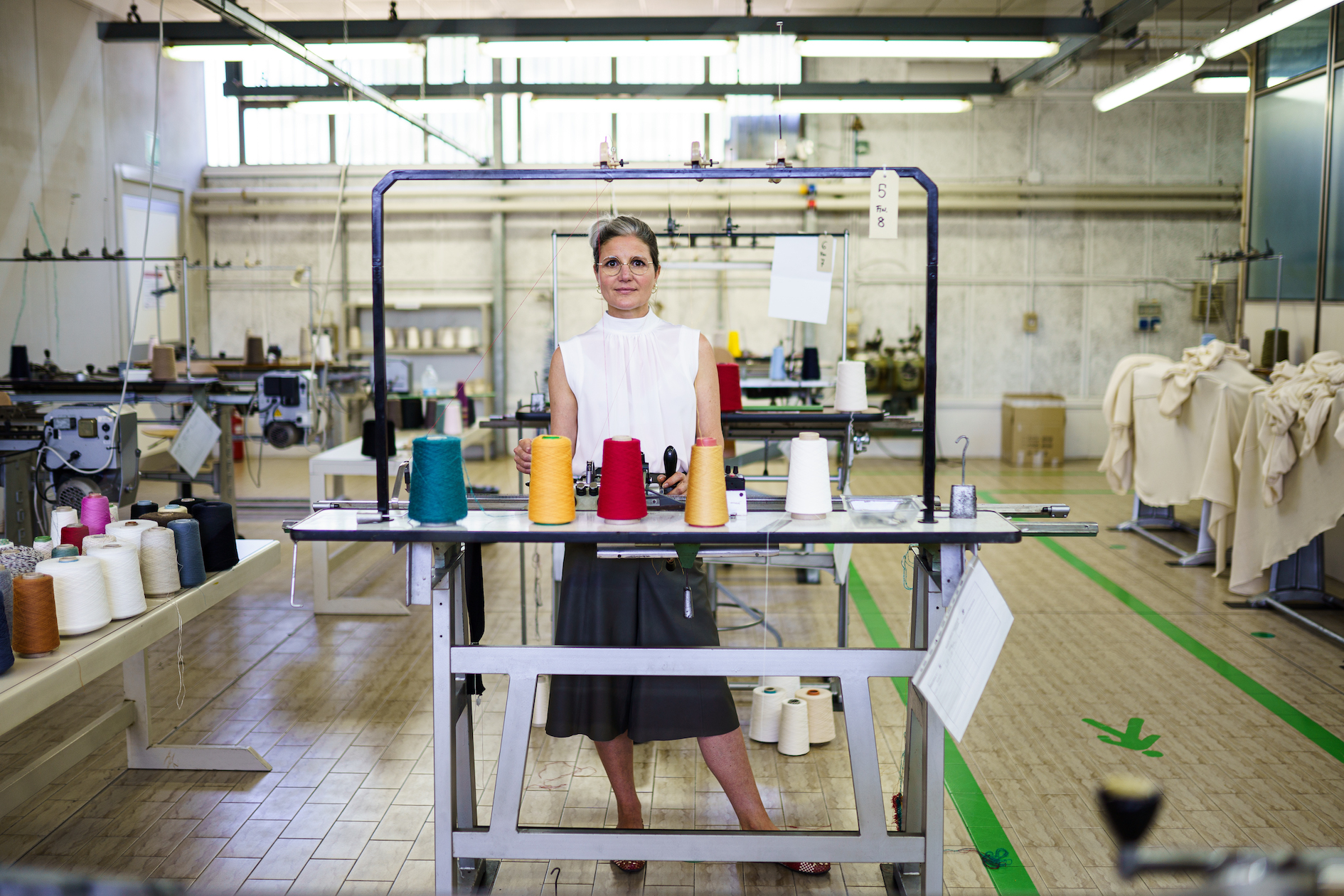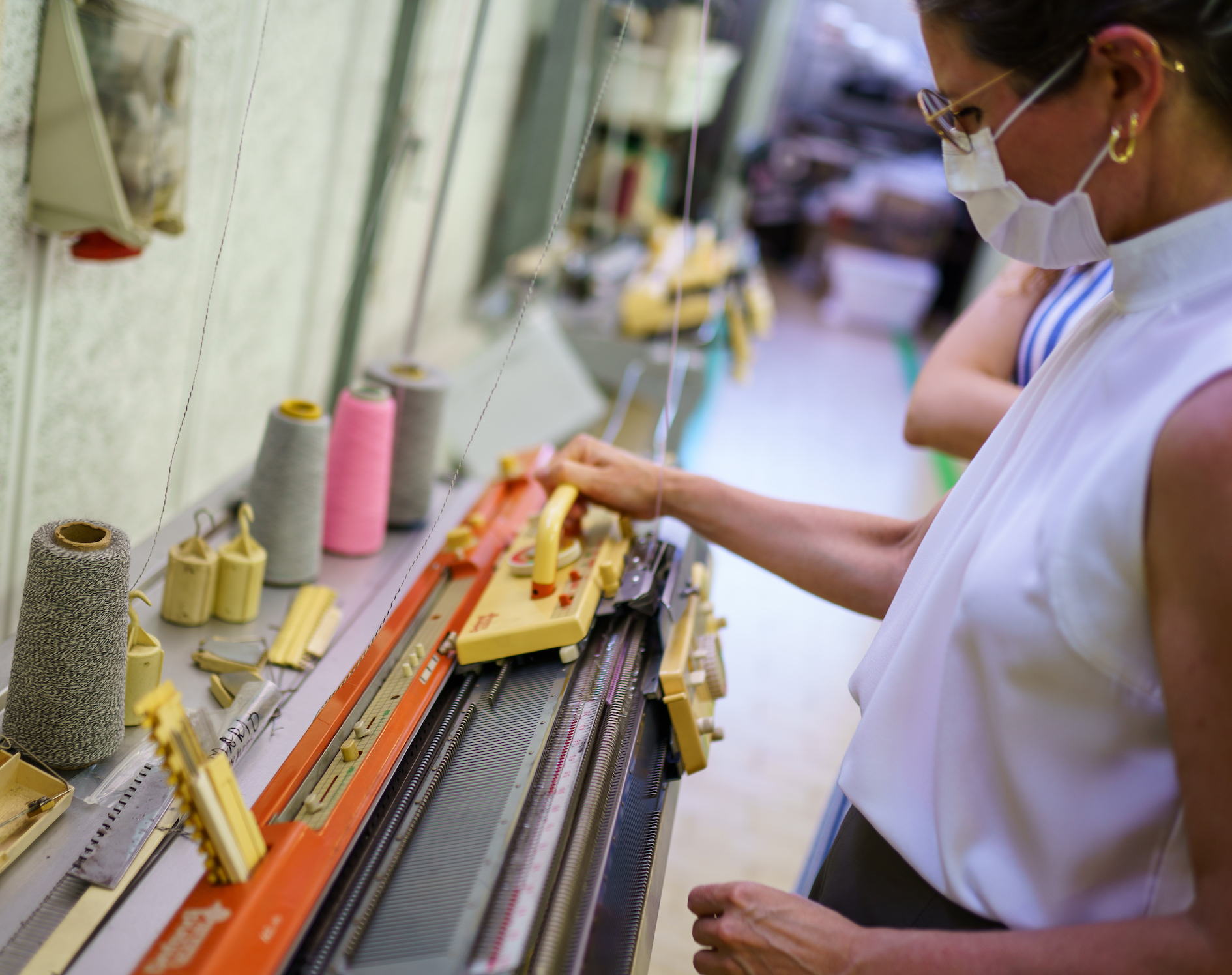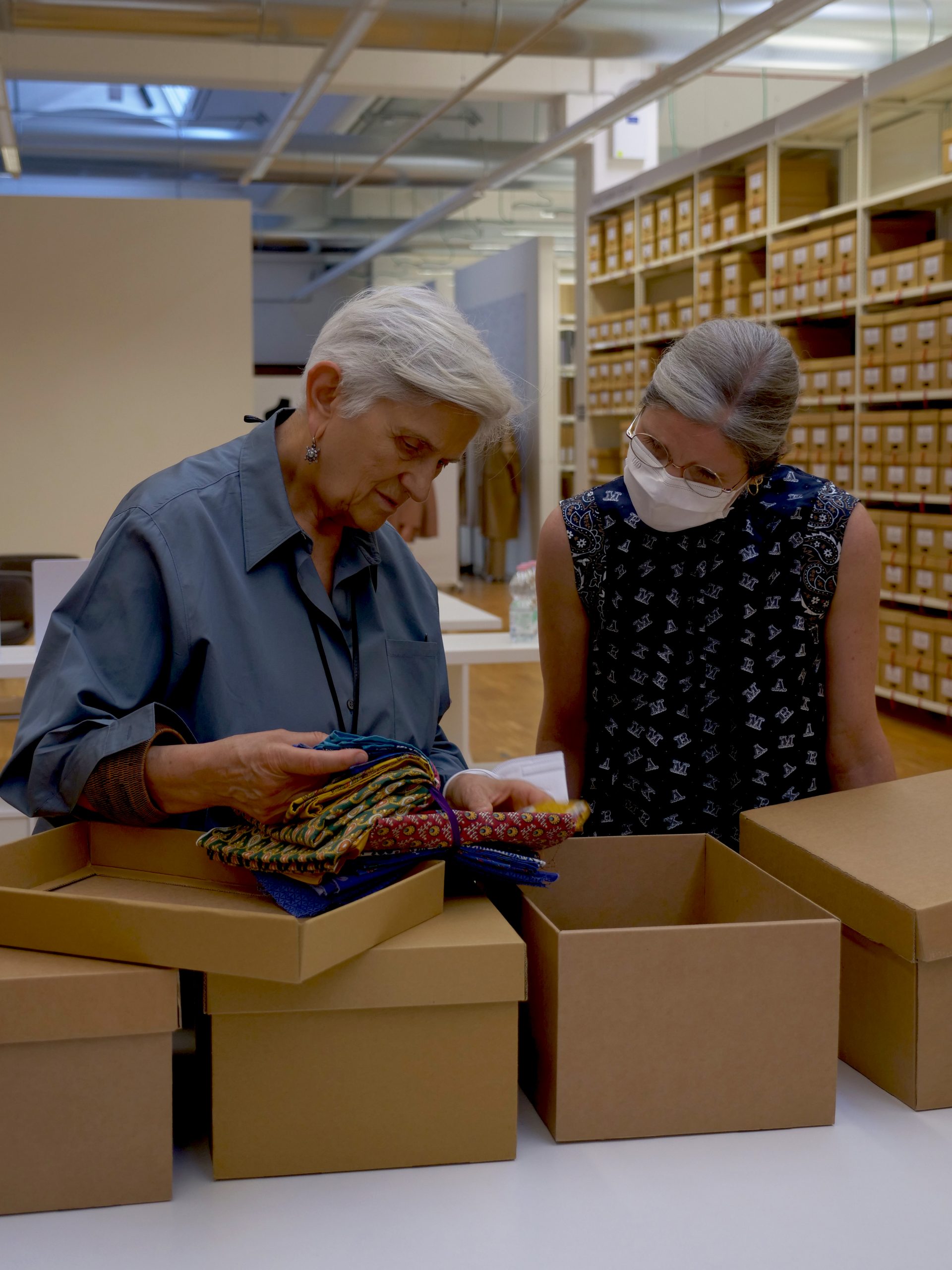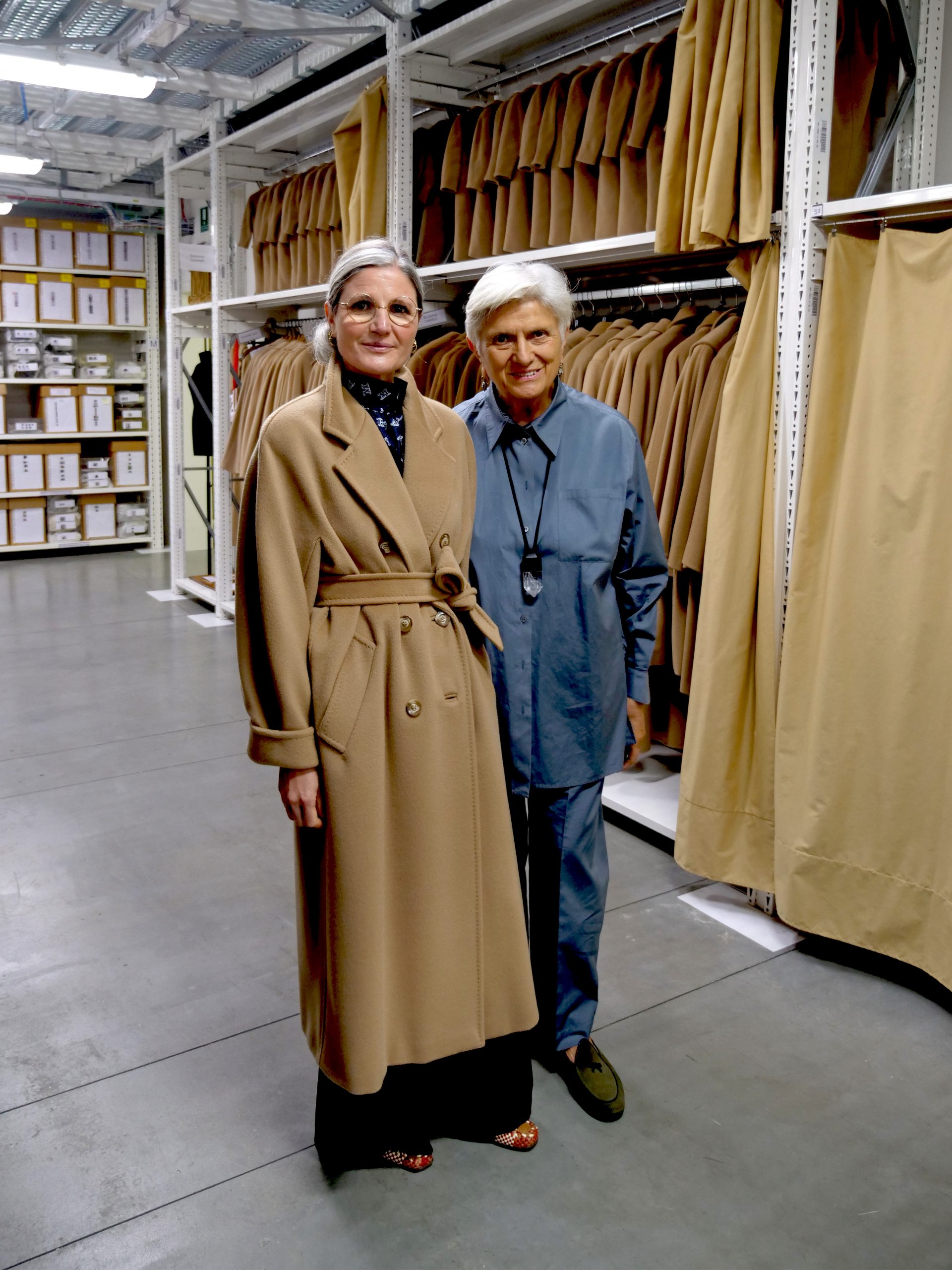Category: Highlights — Published:
In this rainy London weather, we’re thinking about Emma Talbot, the 8th winner of the Max Mara Art Prize for Women, who is enviously enjoying the Italian sunshine on her six-month residency, organised by the Collezione Maramotti.
Emma left for Reggio Emilia last month to embark on her multi-city journey where she’ll be researching classical mythology, textile craftsmanship and permaculture across treasured historic sites and institutions. As she’s now settled into her surroundings, we spoke with the artist about her first residency highlights, what she’s learned and what there is to look forward to over the coming months.

What has been a highlight of your experience on the residency so far?
The first two months of my residency have been so packed with experiences and discoveries, it’s been amazing – like a kaleidoscope of information. My programme has been incredible. I’ve been based in Reggio Emilia, a beautiful area that kept unfolding and becoming more interesting. At the same time, I’ve been learning Italian, which has been great. I’ve absolutely loved it. I focused a lot of my time and research at Modateca Deanna, an incredible place with a huge archive of knitwear and incomparable expertise in knitwear production. Modateca have been so generous, warm, enthusiastic and supportive, it has been brilliant to work with them. They are an amazing, creative family and they’ve also shared so much of the region, the town, culture, ideas and life – they’ve made the experience unforgettable.

How have your interests in knitting, textiles and silk production changed since being in Italy? Have you experienced a work/location/process that has impacted the way you approach fabric materials?
The main thing I’ve been discovering is the fantastic range of possibilities with the materiality of machine knitting. I was lucky enough to have a course of knitting lessons with Modateca, and expert advice to help develop my understanding of ways that knitting could be applied to the processes of making my 3D work. This involved a lot of research and introductions to companies in the area that specialise in various types of production. I was also able to research sustainable processes to apply to the materiality of my practice – looking at systems of recycling fabric in Prato and recycled silk in Como as well as fashion and material archives in Reggio Emilia, Florence, Como and Milan, which have blown my mind.

What are you looking forward to on the next leg of your journey?
My next step is staying in Catania for two months. After starting my research in Northern Italy, it will be so interesting to be in the south – in Sicily. I’ll have a studio there, so I’m looking forward to developing some painting. There are particular visits I want to make to ancient sites and I’m excited to get to know Catania. I’m also looking forward to staying at a permaculture site at the base of Mount Etna – where I’ll be experiencing the processes and principles of permaculture and sustainability at first hand, to inform ideas for the narrative in my work.

The Max Mara Art Prize for Women was established by Whitechapel Gallery in collaboration with the Max Mara Fashion Group in 2005, and with the participation of Collezione Maramotti from 2007. Its aim is to promote emerging female artists based in the UK, enabling them to develop their potential with the gift of time and space; and to inspire new artistic perspectives on 21st century Italy.
The winner is awarded a six month Italian residency, organised by Collezione Maramotti, tailored to fit the artist and their winning proposal for the Prize. During the residency the artist has the opportunity to realise an ambitious new project which is presented in major solo exhibitions at the Whitechapel Gallery in London and Collezione Maramotti in Reggio Emilia, Italy.